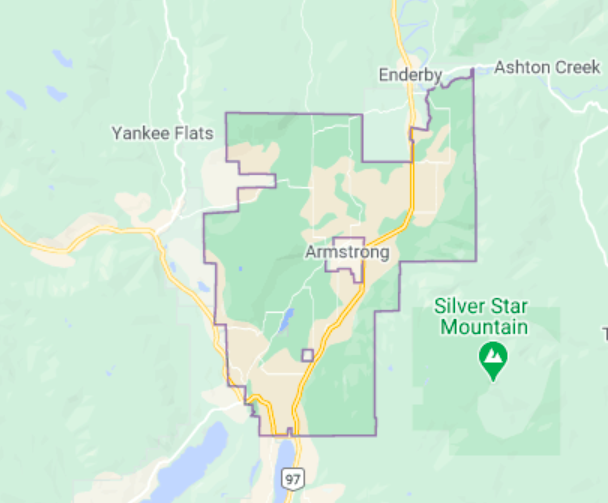Elevate your local knowledge
Sign up for the iNFOnews newsletter today!
Sign up for the iNFOnews newsletter today!
Selecting your primary region ensures you get the stories that matter to you first.

Ask most people what the oldest municipality in the Thompson or Okanagan is and you’re likely to get Kamloops, Vernon, Penticton or Kelowna.
In fact, while Kelowna is now the largest city in the region, many newcomers may assume it was also the first.
Of those four cities, Vernon incorporated first, on Dec. 30, 1892, followed six months later by Kamloops on July 3, 1893.
Kelowna followed more than a decade later, May 4, 1905 while Penticton waited until Jan. 1, 1909.
But it was The Corporation of the Township of Spallumcheen that beat them all, incorporating six months before Vernon on July 21, 1892.
Even historical towns like Ashcroft, Cache Creek and Clinton, that supplied the Cariboo Gold Rush, didn’t actually incorporate until well into the 20th Century.
Ironically, while Spallumcheen was the first to incorporate, it was also among the first to also be split apart. In 1913, Armstrong broke away and became a city, even though it was, and still is, totally surrounded by Spallumcheen.

“It had enough of a population where it could become its own city rather than maintain that town status,” Carmen Kirkland, Armstrong-Enderby branch president of the Okanagan Historical Society explained. “There was, I’m sure, multiple reasons for it.”
Spallumcheen means “the meeting of the waters.” It was likely given that name by First Nations people because waters about a mile south of Armstrong flow into either the Fraser or Columbia river drainage basins, according to a history of Armstrong on the city's web page.
The divide between town and city began in 1892 when the Shuswap-Okanagan Railway was completed, bypassing Spallumcheen’s largest settlement of Lansdowne. All that remains there is the old Lansdowne cemetery.
At first, Armstrong was only a single box car that served as the home for the rail agent.
Residents of the surrounding area gradually moved to Armstrong until it was large enough to incorporate as a city on March 31, 2013.
Here are the incorporation dates of Okanagan towns and cities,
*NOTE: These dates are from web.archive.org except for Kamloops, which is listed there as incorporating in 1967, which is when it amalgamated with North Kamloops.
To contact a reporter for this story, email Rob Munro or call 250-808-0143 or email the editor. You can also submitphotos, videos or news tips to the newsroom and be entered to win a monthly prize draw.
We welcome your comments and opinions on our stories but play nice. We won't censor or delete comments unless they contain off-topic statements or links, unnecessary vulgarity, false facts, spam or obviously fake profiles. If you have any concerns about what you see in comments, email the editor in the link above.
News from © iNFOnews.ca, . All rights reserved.
This material may not be published, broadcast, rewritten or redistributed.

This site is protected by reCAPTCHA and the Google Privacy Policy and Terms of Service apply.
Want to share your thoughts, add context, or connect with others in your community?
You must be logged in to post a comment.